
Roots
Have you ever paused to consider the silent dialogues that unfold above our brows, in the very textures and forms our hair assumes? Across the vast and vibrant continent of Africa, hair has long transcended mere adornment. It stands as a living chronicle, a deeply personal yet profoundly public declaration. Before the spoken word, before written scripts, the sculpted strands of African people articulated stories of lineage, societal standing, spiritual connection, and individual journey.
This ancient language, woven into the very fiber of community life, invites us to look beyond superficial beauty and truly perceive the profound wisdom held within each coil and braid. It is a testament to the enduring human capacity for expression, etched not on parchment, but on the crown.
The anatomical foundations of textured hair offer a compelling starting point for understanding its communicative capacity. Unlike straight hair, which typically grows in a circular cross-section, textured hair exhibits an elliptical or even flat cross-section, dictating its characteristic curl patterns. This unique structure influences how light interacts with the hair shaft, how moisture is retained, and how the hair can be manipulated into diverse styles.
The very nature of its growth, often denser and with varying degrees of curl, renders it an ideal medium for intricate sculptural expressions. This innate architectural difference is not merely a biological fact; it underpins the historical versatility and artistic potential that African cultures have harnessed for millennia.
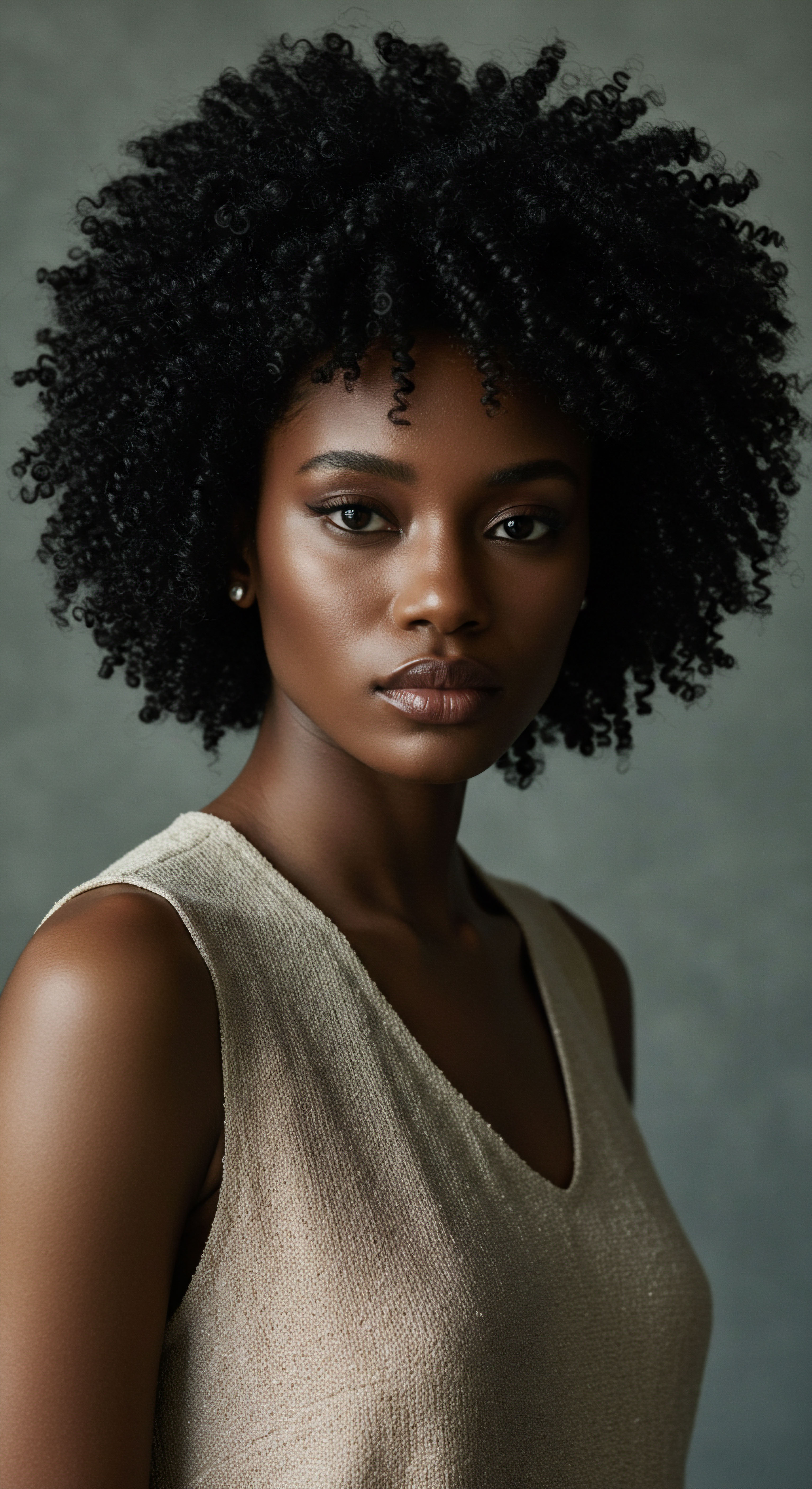
Hair’s Innate Architecture and Its Cultural Echoes
The unique follicular structure of textured hair provides a natural canvas for diverse expressions. The hair strand itself, emerging from its follicle, can vary from a loose wave to a tight, coiling zig-zag, often described by classification systems that help us understand its specific characteristics. This range, from type 3 to type 4, each with its own sub-categories, speaks to a magnificent spectrum of natural beauty.
The hair’s natural inclination to coil upon itself allows for styles that defy gravity, creating volume and sculptural forms impossible with other hair types. This inherent characteristic was not a limitation but an invitation for creativity, leading to styles that could signify complex social data through their shape, height, and orientation.
African hair, by its very biological design, served as an ideal medium for complex social and spiritual declarations.
Consider the way a community might distinguish its members through subtle differences in braided patterns or sculpted forms. A particular twist, the direction of a part, or the addition of specific ornaments could delineate an individual’s age group, marital status, or even their village of origin. This silent language was understood by all within the community, creating a visual shorthand that reinforced social order and collective identity. The hair, therefore, transcended its biological role to become a dynamic element of cultural discourse.
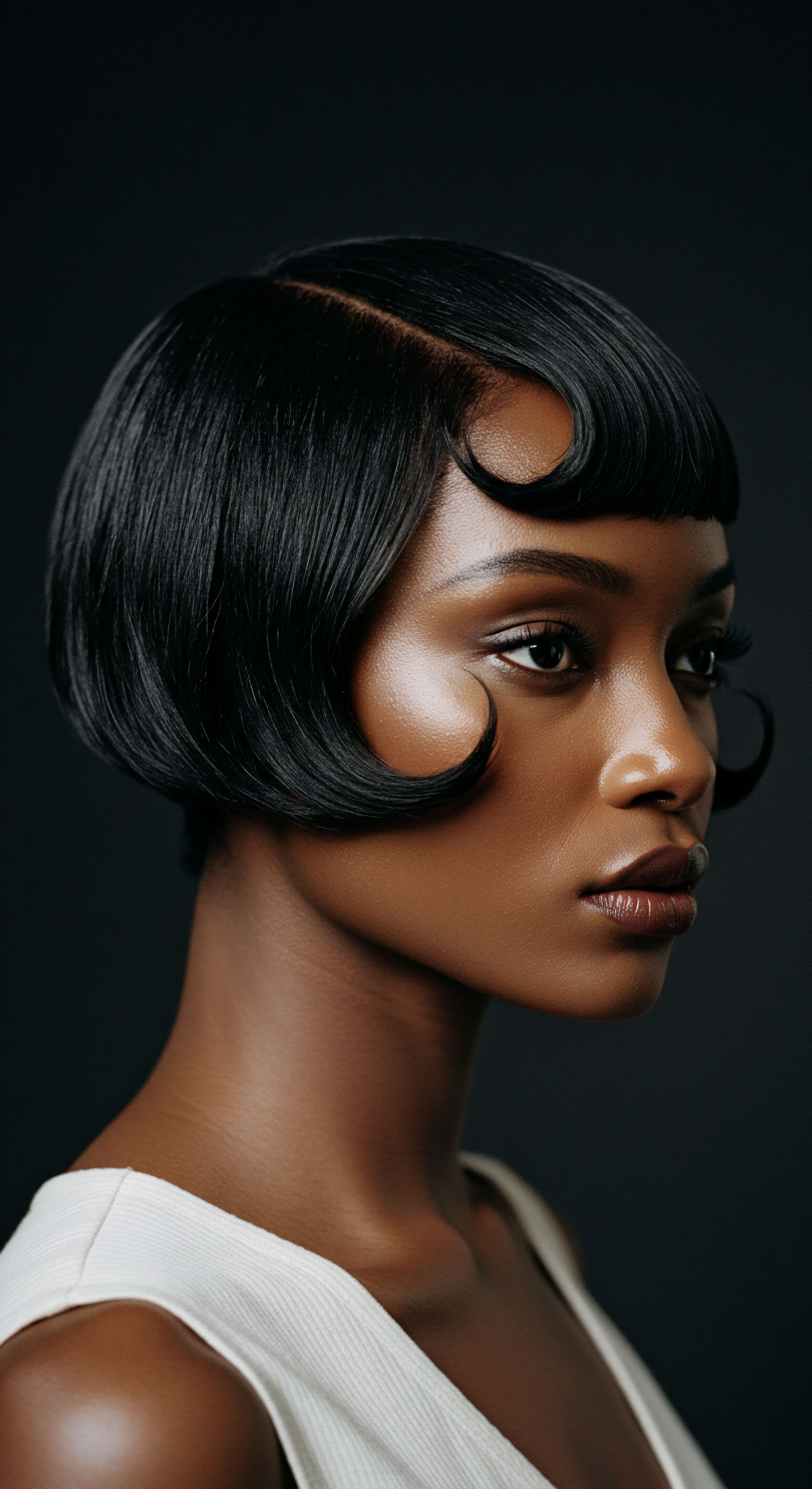
Can Hair Growth Cycles Reflect Life Stages?
Hair growth cycles, though universal, gain particular significance when viewed through the lens of African cultural practices. The anagen (growth), catagen (transition), and telogen (resting) phases influence hair density and length, which in turn could impact the feasibility and message of certain styles. For instance, longer, thicker hair might allow for more elaborate styles signifying maturity or elevated status, while shorter, freshly shorn hair could denote mourning or a new beginning. The cyclical nature of hair itself mirrors the cycles of life, prompting cultures to connect hair states with life transitions.
- Anagen Phase ❉ The active growth period, dictating potential length and volume.
- Catagen Phase ❉ A brief transitional period where growth ceases.
- Telogen Phase ❉ The resting phase, preceding hair shedding.
Understanding these biological rhythms provided a practical framework for communities. Certain rituals might coincide with hair growth cycles, ensuring that a style meant to mark a significant life event was undertaken at the appropriate time for maximum impact and longevity. This deep respect for the hair’s natural process underscores the holistic approach many African societies held towards beauty and wellbeing.
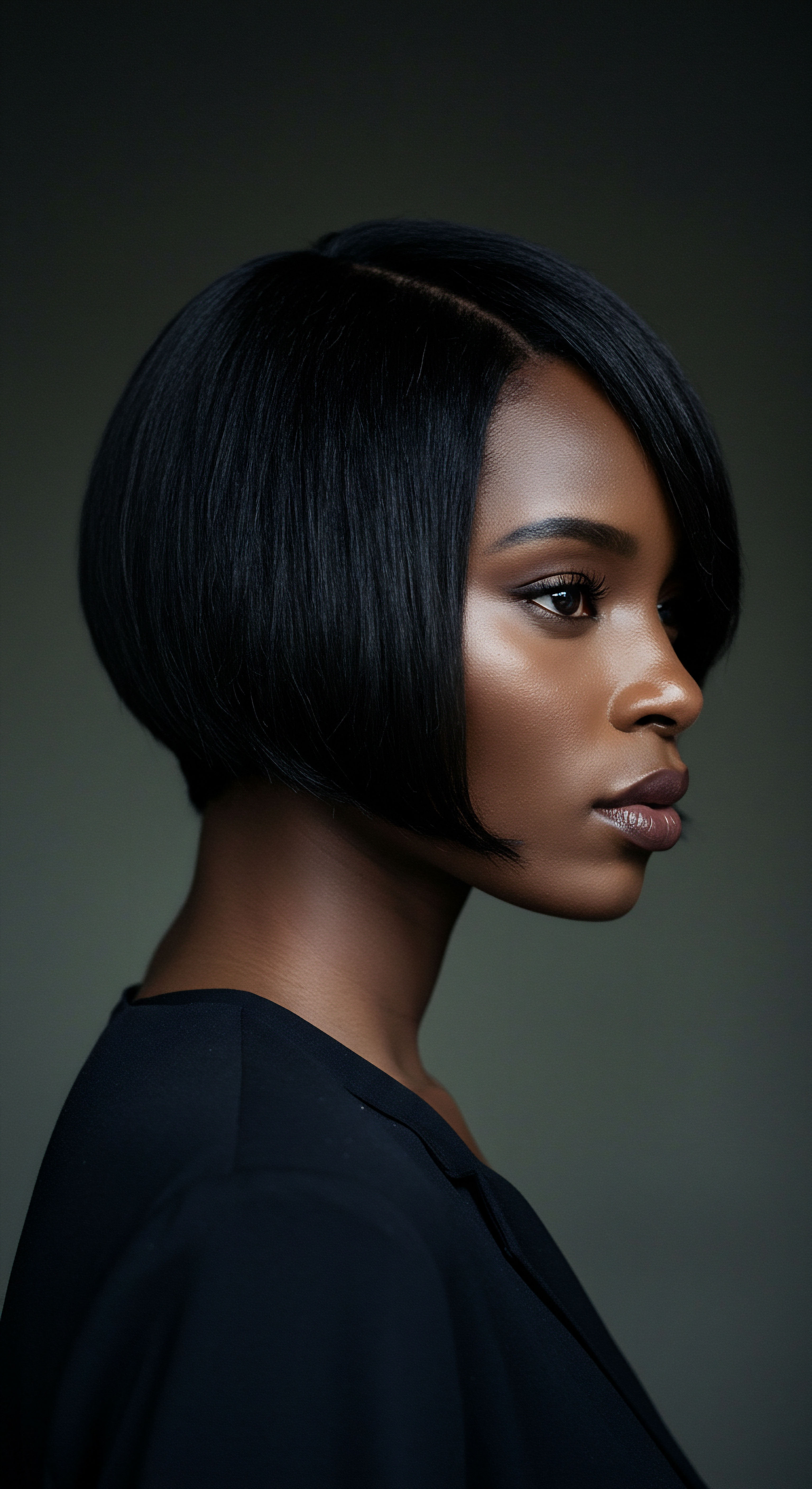
Ritual
As we step from the foundational understanding of hair’s very being, our focus turns to the deliberate acts, the careful hands, and the shared spaces where hair transforms into a living testament. This is the realm of ritual, where techniques and tools, passed down through generations, become conduits for expression. The art of styling textured hair in African communities was never a solitary endeavor; it was a communal activity, a time for sharing stories, wisdom, and the very essence of connection. Each braid, each twist, each careful adornment was a step in a larger conversation, a silent yet potent dialogue spoken through the language of the scalp.
Protective styles stand as a testament to the ingenuity and practical wisdom embedded within African hair traditions. Styles such as braids, twists, and locs not only safeguard the hair from environmental stressors and breakage but also served as powerful conveyors of social information. The sheer longevity of these styles meant that the messages they carried remained visible for extended periods, reinforcing their communicative weight within the community.

How Did Protective Styles Communicate Status?
The intricacy and duration required for many protective styles often reflected the resources and social standing of the individual. For instance, in some West African societies, particularly among the Wolof people of Senegal, elaborate braided styles could signify wealth, social standing, or marital eligibility. The amount of time and skill invested in creating such styles was a luxury, a visual display of one’s place within the social hierarchy.
A study by Abdoulaye Gaye (2007) on Wolof hair practices notes that complex coiffures, often adorned with cowrie shells or amber beads, were reserved for special occasions and were a direct indicator of a woman’s family prosperity and her readiness for marriage. This example, while specific, underscores a broader principle ❉ the visible investment in hair could be a direct proxy for social capital.
| Hairstyle Type Braids |
| Common Form Cornrows, box braids, single braids |
| Potential Social Message Marital status, age, community affiliation, mourning, celebration |
| Hairstyle Type Locs |
| Common Form Matted or cultivated strands |
| Potential Social Message Spiritual devotion, wisdom, age, non-conformity, cultural identity |
| Hairstyle Type Sculpted Coils |
| Common Form Afro, intricate up-dos |
| Potential Social Message Strength, beauty, rebellion (post-colonial context), status |
| Hairstyle Type Shaved Patterns |
| Common Form Partial or full head shaving with designs |
| Potential Social Message Initiation, mourning, punishment, rebirth, spiritual cleansing |
| Hairstyle Type These examples highlight the diverse range of information conveyed through hair. |
The creation of these styles often involved a communal gathering, a space where intergenerational knowledge was shared. Elders would instruct younger generations, not only in the technical aspects of braiding or twisting but also in the cultural significance of each pattern. This transmission of knowledge reinforced community bonds and ensured the continuity of these visual languages.
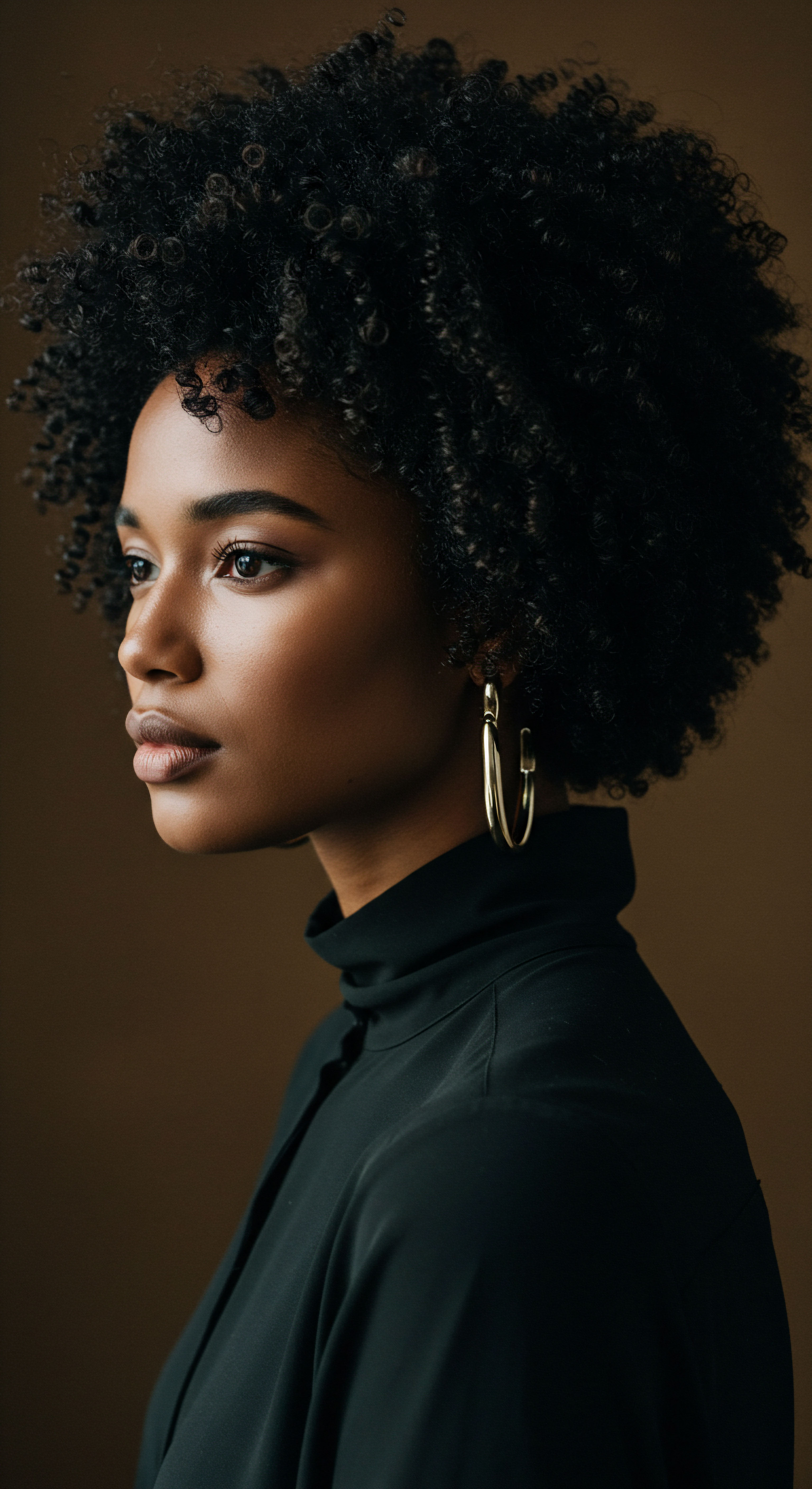
What Are the Nuances of Natural Styling Techniques?
Beyond protective styles, natural styling techniques, which emphasize the hair’s inherent curl pattern, also conveyed messages. The Afro, for instance, became a powerful symbol of Black pride and resistance during the civil rights movements of the 20th century. Its unapologetic volume and natural form challenged Eurocentric beauty standards, asserting a distinct cultural identity. This deliberate choice to wear hair in its natural state was a bold statement, a visual declaration of self-acceptance and political solidarity.
The intentional styling of African hair often transformed a personal choice into a public statement of identity or defiance.
Even seemingly simple acts, such as the direction of hair parts or the inclusion of specific beads or cowrie shells, held significant meaning. In some cultures, a central part could signify marriage, while a side part might denote a single status. The materials used for adornment were equally important. Shells, metals, and carved wood were not merely decorative; they often carried spiritual significance or represented the wearer’s access to valuable resources.
The tools used in these styling rituals, from specialized combs to natural oils and butters, were also deeply connected to the practices. These implements, often handcrafted, were not just functional; they were imbued with the spirit of the traditions they served, underscoring the holistic and intentional approach to hair care and styling within these communities.

Relay
Our exploration now reaches a more profound layer, one where the intricate relationship between hair, societal structure, and cultural continuity truly unfolds. This is the domain where the biological reality of textured hair converges with the deepest currents of human experience, creating a communication system that is both sophisticated and profoundly personal. The messages relayed through African hairstyles were rarely singular; they were multi-layered, reflecting a complex interplay of identity, power, and resilience. To truly comprehend this phenomenon, we must consider the historical context, the anthropological lens, and the very real impact these visual codes had on individuals and communities.
The semiotics of African hair extend far beyond simple identification. They reveal a nuanced system of social control, spiritual connection, and collective memory. Hairstyles could denote not only an individual’s clan or age but also their occupation, their readiness for specific rites of passage, or even their emotional state. The very act of styling hair became a ritualized performance, a moment of connection between the stylist and the styled, where knowledge was transmitted and communal bonds reinforced.
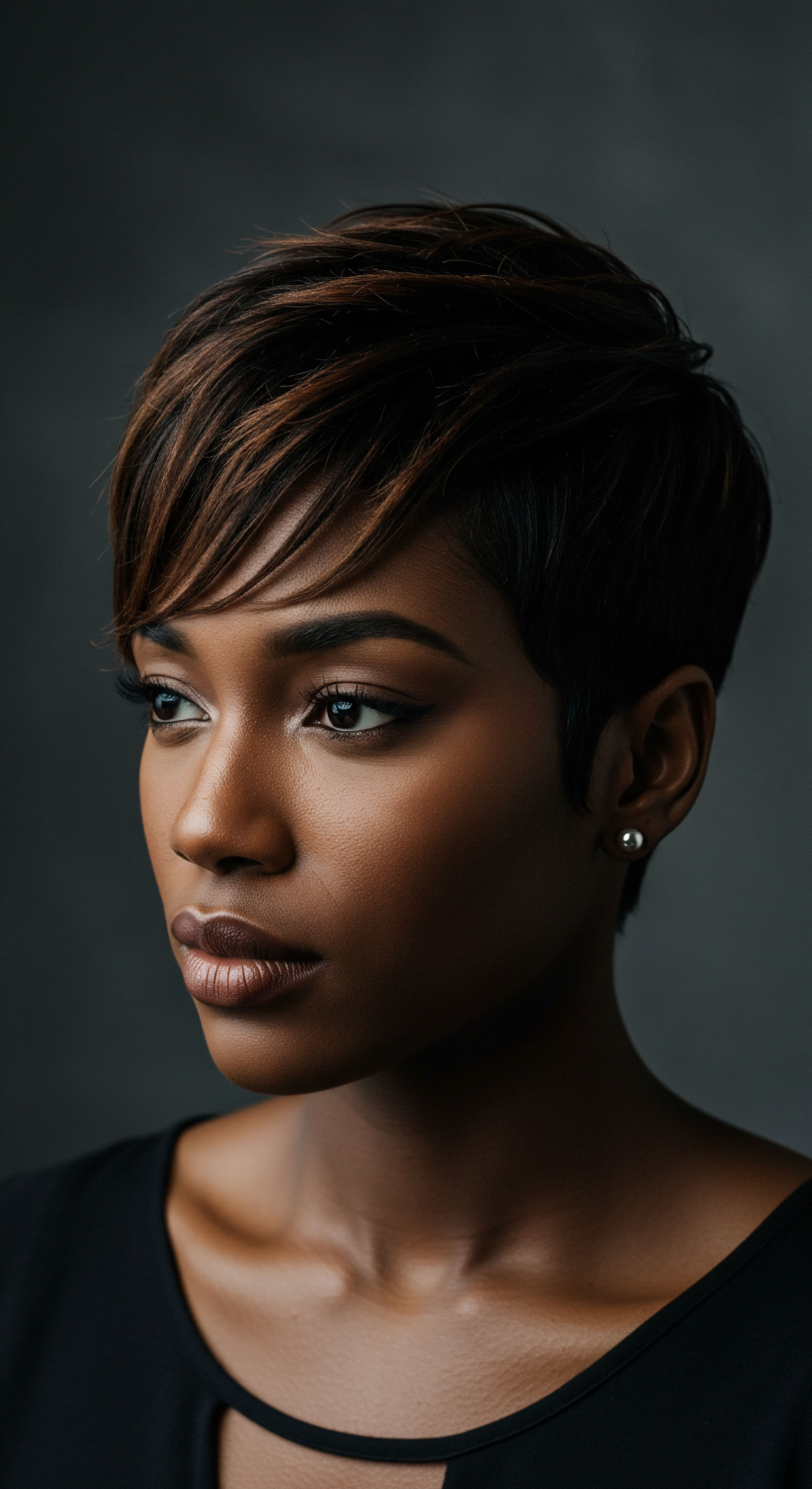
How Did Hairstyles Reflect Societal Hierarchy?
In many African societies, the complexity and elaboration of a hairstyle were direct indicators of social standing. The most intricate coiffures, often requiring hours or even days to construct, were typically reserved for royalty, elders, or individuals of high status. This was not simply a matter of aesthetic preference; it was a practical demonstration of leisure time, access to skilled artisans, and a life not consumed by manual labor. For instance, among the Mangbetu people of Central Africa, the distinctive elongated head shape, achieved through cranial modification in infancy, was complemented by elaborate fan-shaped hairstyles that further accentuated this marker of nobility.
These towering coiffures, often built over a framework and adorned with pins and beads, were a clear visual demarcation of their aristocratic lineage and power. This physical alteration, combined with the hair’s sculpted form, created an undeniable visual language of distinction and authority.
Beyond overt markers of status, hair could also communicate more subtle social cues. Consider the role of hair in pre-colonial West African judicial systems. In some Akan communities, for example, a person accused of a crime might have their hair styled in a specific, disheveled manner as a sign of their temporary disenfranchisement or guilt, until their case was resolved. This public display served as a warning to others and a clear communication of their current social standing within the community.
Once acquitted, their hair would be ritually restyled, signifying their reintegration. This demonstrates how hair could serve as a dynamic, visible register of legal and social status.
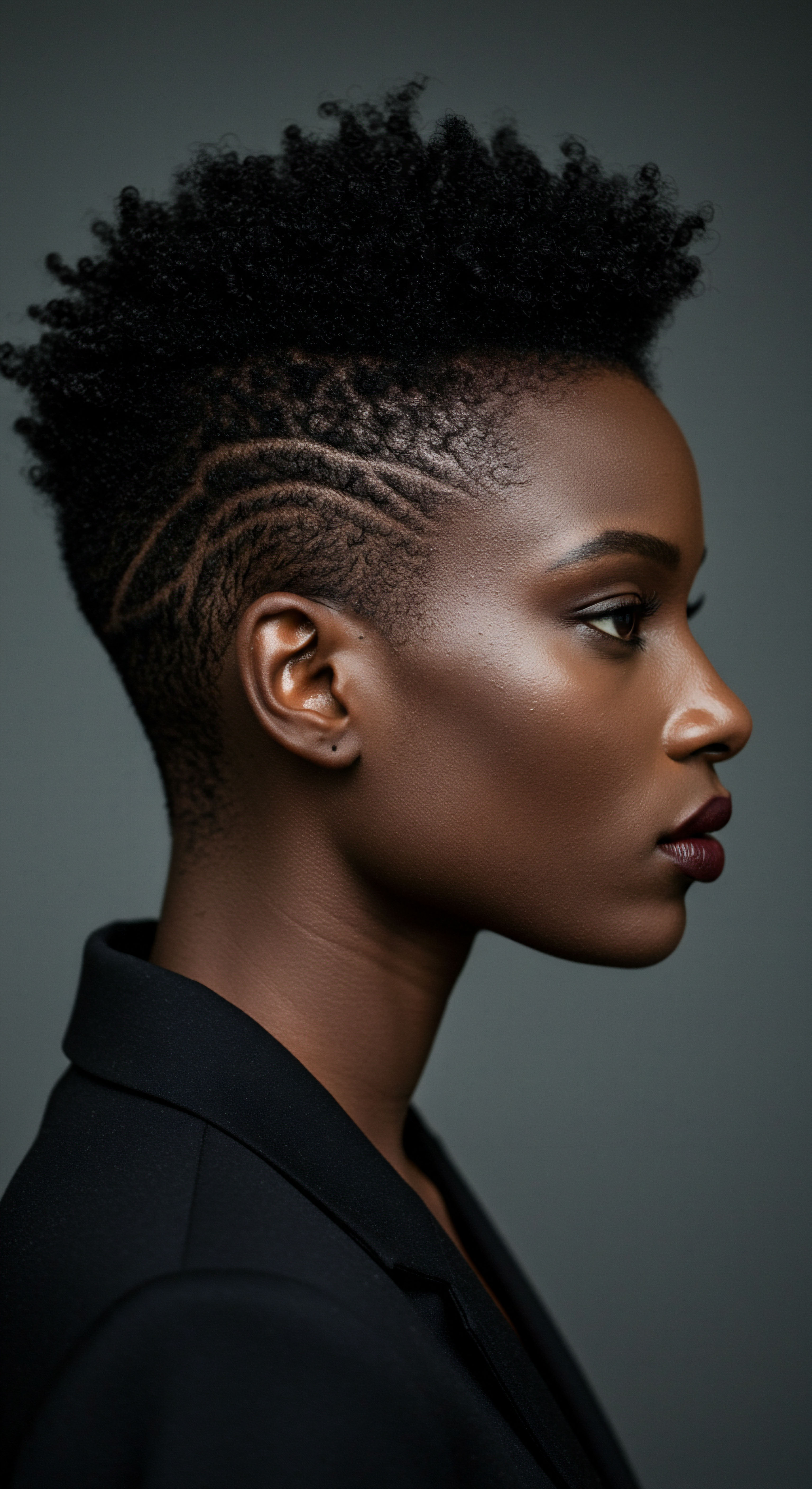
Can Hair Be a Historical Record?
Indeed, hair served as a living archive, carrying narratives through generations. The patterns and forms often held symbolic meaning, retelling creation myths, historical migrations, or significant events. For instance, some traditional patterns in Nigeria, particularly among the Yoruba, are said to mimic agricultural patterns or natural formations, thereby connecting the wearer to the land and their ancestral heritage. This profound connection meant that a hairstyle was not just a personal choice; it was a link to a collective past and a statement of belonging.
The systematic stripping of these hair traditions during the transatlantic slave trade represents a profound loss of cultural communication. Enslaved Africans were often forced to shave their heads or adopt simplistic, unadorned styles, a deliberate act designed to erase their identity, sever their connections to their heritage, and dismantle their internal social structures. This historical trauma underscores the immense power that hair held as a communicative tool, so much so that its removal was deemed a necessary step in dehumanization.
Yet, even in the face of such oppression, resilience shone through. Secret patterns, hidden braids, and subtle adornments sometimes persisted, becoming covert signals of resistance and solidarity among the enslaved.
African hair traditions represent a dynamic communication system, reflecting identity, power, and cultural resilience.
In contemporary times, the legacy of these communication systems persists. The natural hair movement, for example, is a powerful reassertion of identity and a reclamation of ancestral practices. Wearing an Afro, locs, or intricate braids today often carries a message of self-acceptance, cultural pride, and a rejection of Eurocentric beauty standards.
This contemporary communication echoes the historical power of hair as a medium for social commentary and personal declaration. The decision to wear one’s hair in a particular style is still a potent statement, albeit in a different social landscape.
- Lineage and Clan Affiliation ❉ Specific patterns identified an individual’s family or tribal group.
- Marital Status ❉ Unmarried, married, widowed, or eligible for marriage could be indicated.
- Age and Rites of Passage ❉ Hairstyles marked transitions from childhood to adulthood, or other life stages.
- Spiritual and Ritualistic Roles ❉ Certain styles were worn by healers, priests, or during sacred ceremonies.
- Social Standing and Wealth ❉ Complexity, adornment, and time investment could denote status.
- Resistance and Identity ❉ Post-colonial, hair became a symbol of defiance against oppression.
The continuity of these messages, even through centuries of upheaval, speaks to the enduring significance of hair as a language. It is a language that is continually evolving, adapting to new contexts, yet always rooted in the deep cultural memory of African peoples. The intricate dance between biology, artistry, and social meaning ensures that the dialogue on the crown continues to unfold.
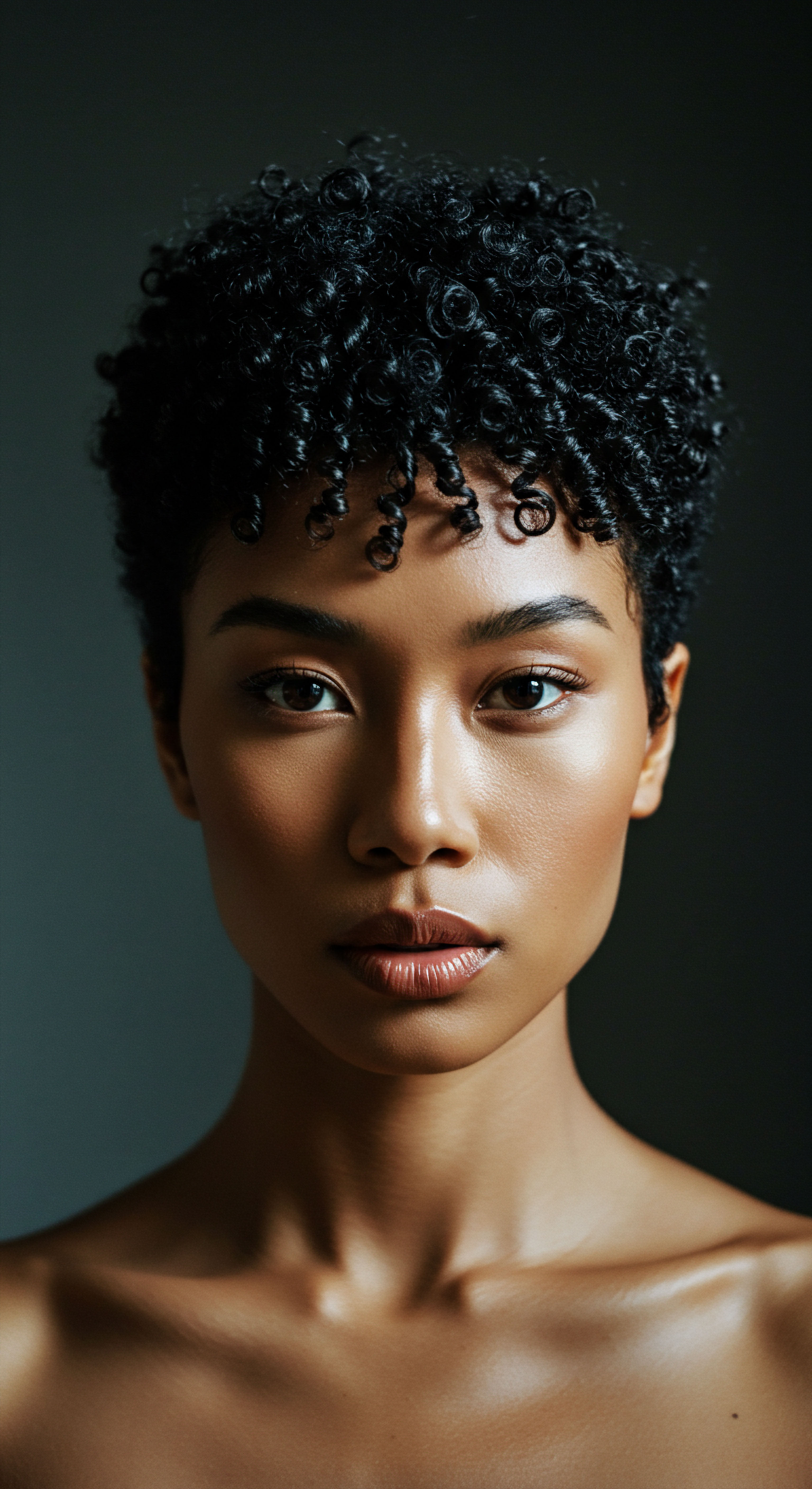
Reflection
To truly appreciate the deep significance of African hairstyles is to recognize them not as fleeting trends, but as enduring archives. They stand as vibrant expressions of human ingenuity, resilience, and connection. Each braid, each coil, each sculpted form tells a story, whispers a history, and affirms an identity.
The wisdom held within these traditions reminds us that beauty is not merely skin deep; it is profoundly interwoven with culture, community, and the very essence of self. This living legacy continues to shape perceptions and inspire expressions of identity across the globe, inviting us to look closer, listen deeper, and honor the rich dialogues spoken through the hair.

References
- Gaye, Abdoulaye. “Hair, Culture, and Identity in Wolof Society.” Journal of Black Studies, vol. 37, no. 5, 2007, pp. 697-710.
- Dabiri, Emma. Don’t Touch My Hair. Penguin Books, 2019.
- Byrd, Ayana, and Lori L. Tharps. Hair Story ❉ Untangling the Roots of Black Hair in America. St. Martin’s Press, 2001.
- Mercer, Kobena. Welcome to the Jungle ❉ New Positions in Black Cultural Studies. Routledge, 1994.
- Hooks, bell. Black Looks ❉ Race and Representation. South End Press, 1992.
- Okeke-Agulu, Chika. “Hair and the African Aesthetic.” Nka ❉ Journal of Contemporary African Art, no. 18, 2003, pp. 60-67.
- Wilkerson, Jessica. “The CROWN Act ❉ A Legal History of Hair Discrimination.” Harvard Civil Rights-Civil Liberties Law Review, vol. 56, no. 1, 2021, pp. 1-30.
- Akbar, M. “The Social and Cultural Significance of Hair in African Societies.” International Journal of African Studies, vol. 3, no. 2, 2015, pp. 45-58.